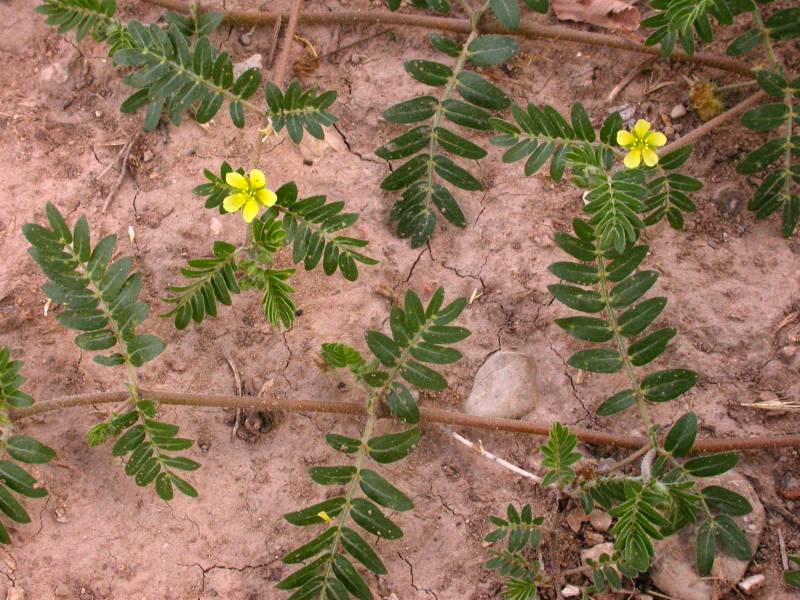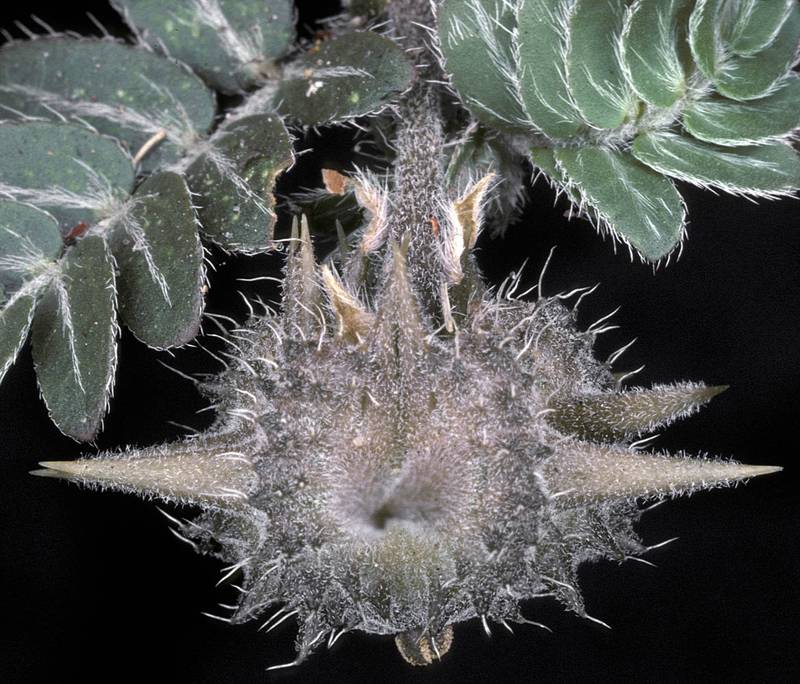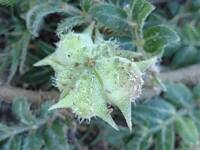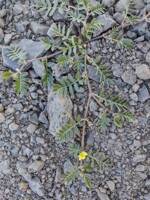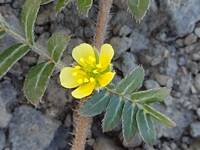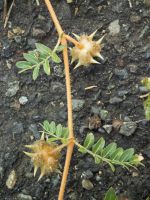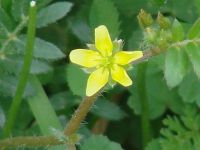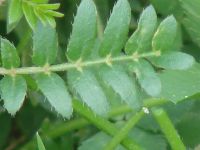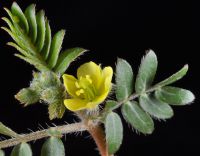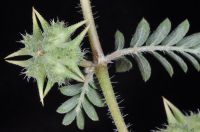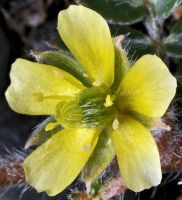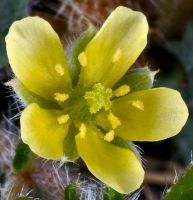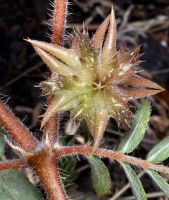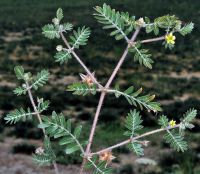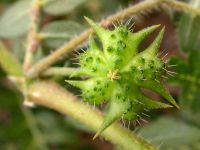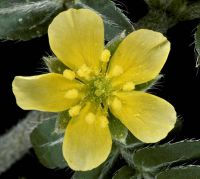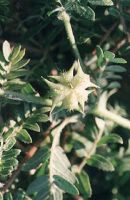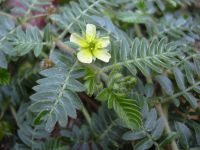Distribution: Occurring chiefly east of the Cascades crest in Washington; British Columbia to California, east across North America to the Atlantic Coast.
Habitat: Noxious weed of sandy soils and roadsides.
Flowers: May-September
Origin: Introduced from Europe and northern Africa
Growth Duration: Annual
Conservation Status: Not of concern
Stiff-hairy, prostrate annual, forming mats 3-10 dm. broad.
Leaves opposite, pinnate; leaflets 4-8 pairs, obliquely oblong-ovate, 5-15 mm. long; stipules 1-2 mm. long.
Flowers solitary on short, axillary peduncles; sepals 5; petals 5, yellow, 3-5 mm. long, attached at the edge of a 10-lobed disk; stamens 10, borne within the disk; style 1, stigma 5-lobed.
Fruit depressed, deeply 5-lobed, separating at maturity into 5 hard, 2-spined segments, the spines 2-6 mm. long, with numerous smaller spines that form a broad, dorsal, longitudinal row.
Publication: Sp. Pl. 1: 387, 1753.
PNW Herbaria: Specimen records of Tribulus terrestris in the Consortium of Pacific Northwest Herbaria database.
WA Flora Checklist: Tribulus terrestris checklist entry.
OregonFlora: Tribulus terrestris information.
E-Flora BC: Tribulus terrestris atlas page.
CalPhotos: Tribulus terrestris photos.
USDA Plants: Tribulus terrestris information.


